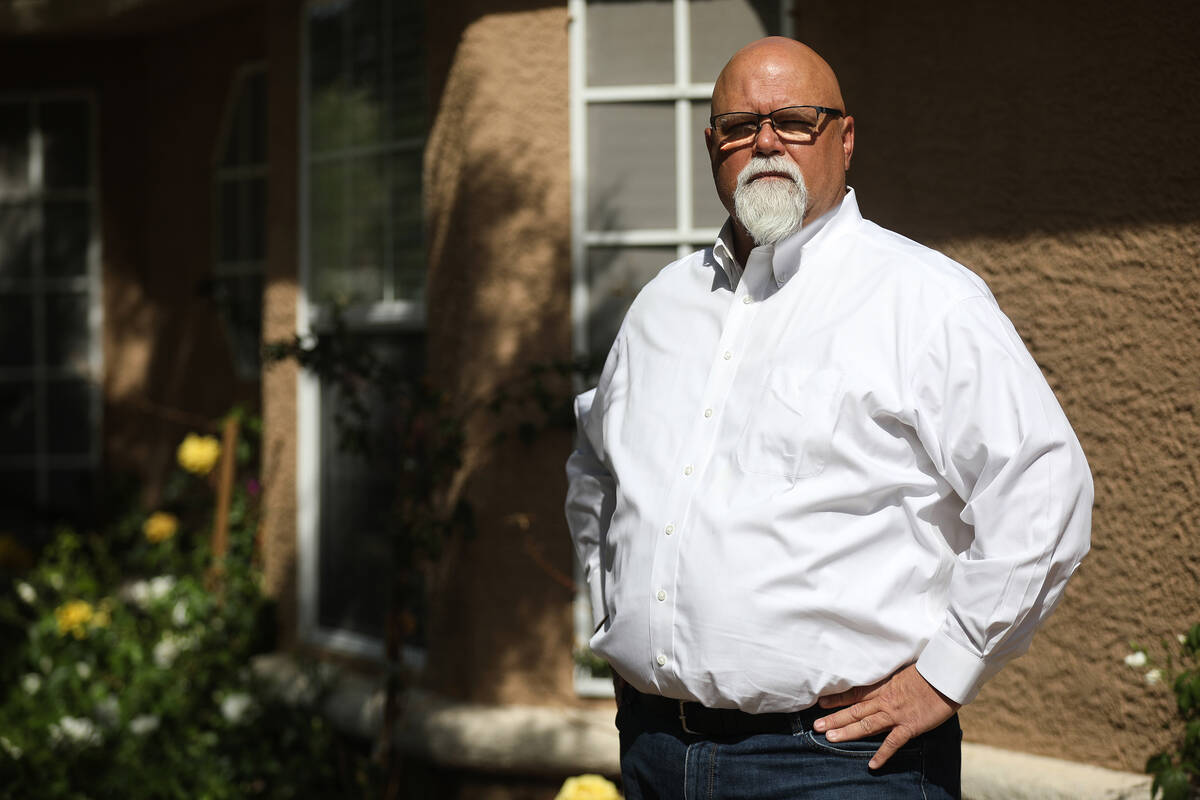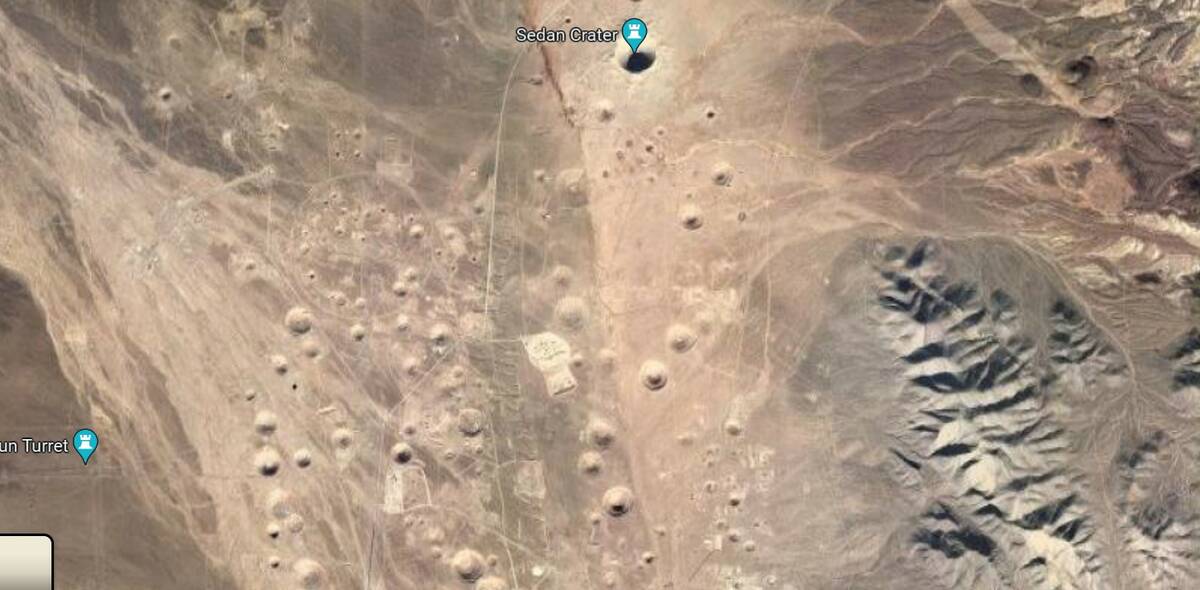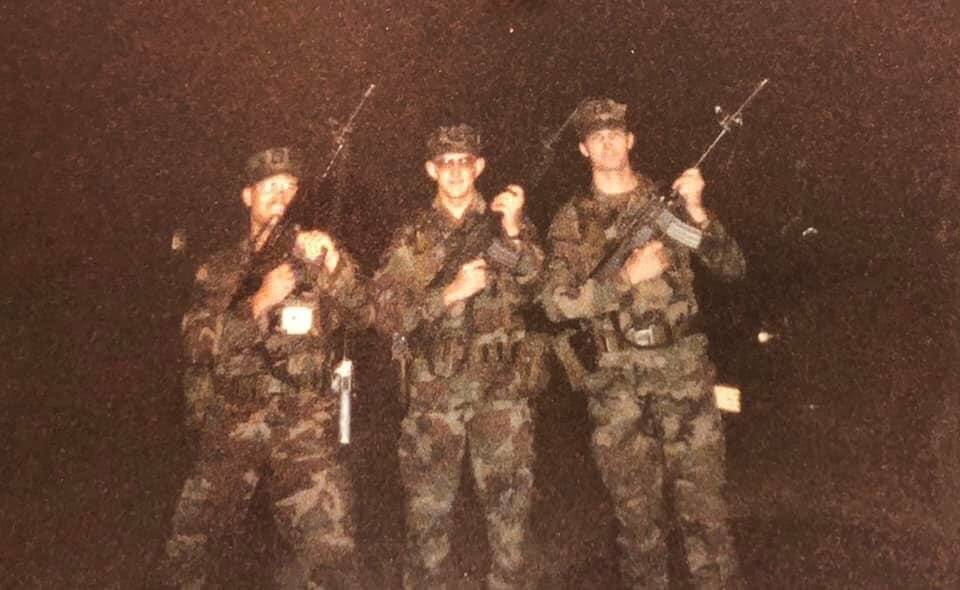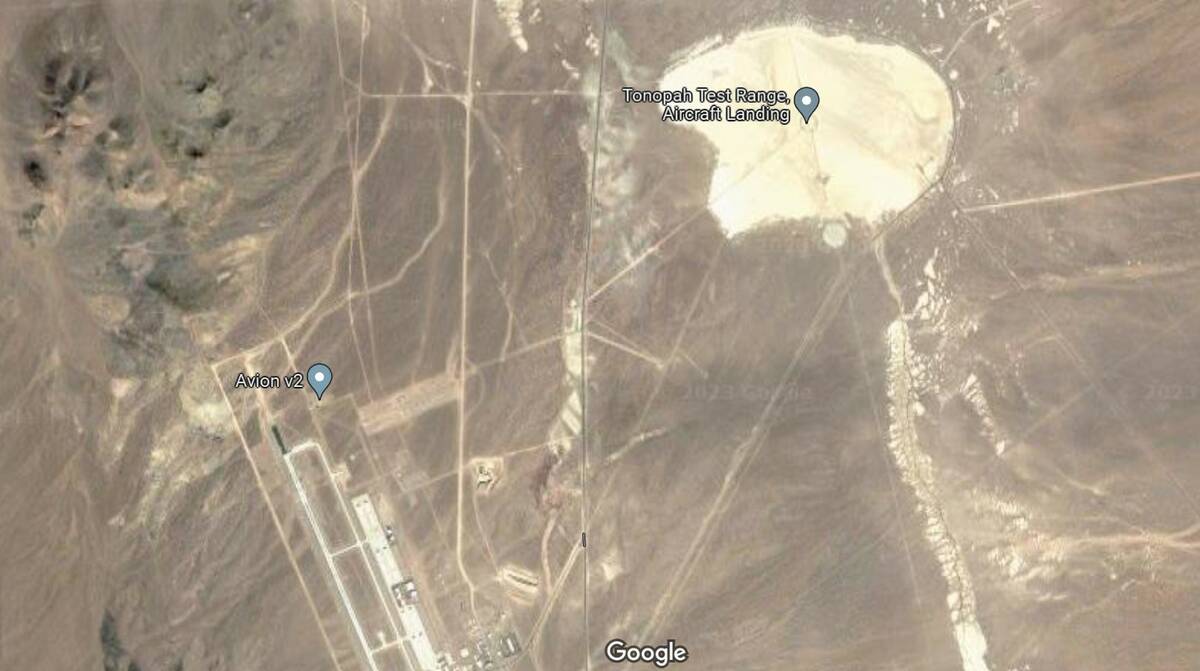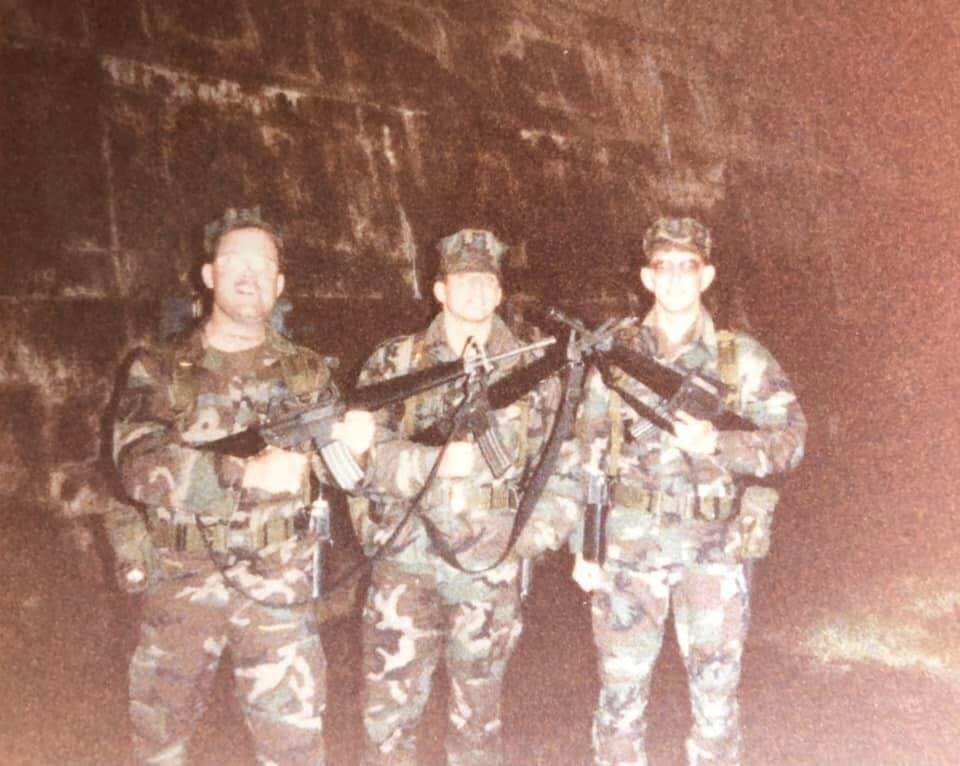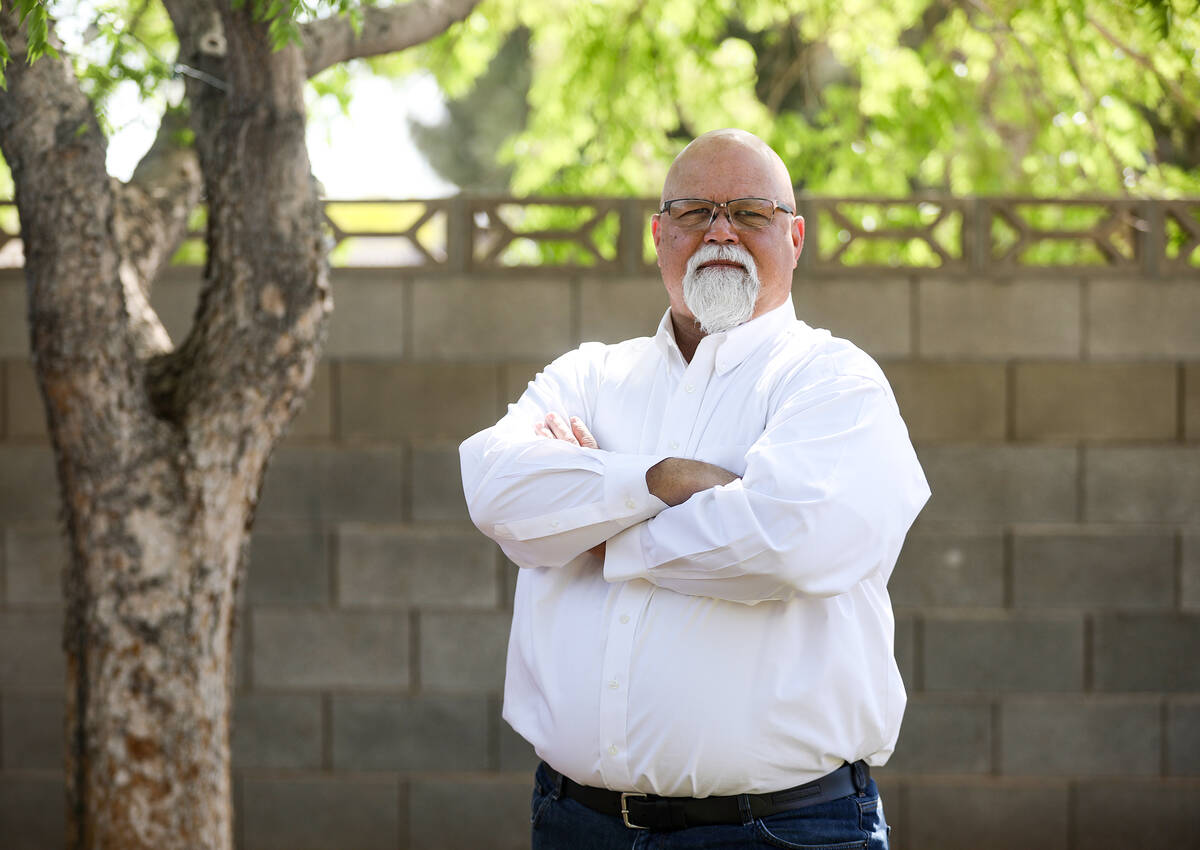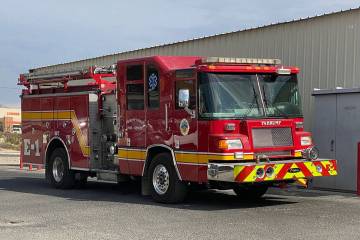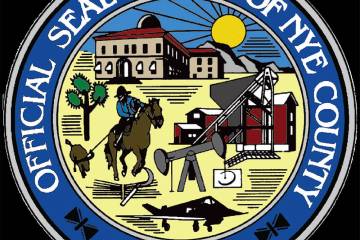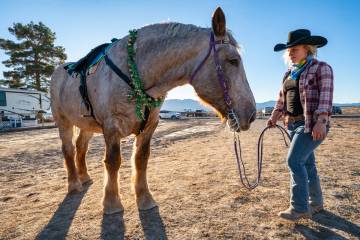‘We were never told’: Veterans of nuclear test site seek compensation
Las Vegas resident Dave Crete attended a reunion in 2016 with eight of his fellow veterans who had served in the 1980s at what was then known as the Nevada Test Site, when they noticed many of them had similar health problems.
Six of them had fatty tumors called lipomas on their bodies, and Crete himself had to get a lump the size of a grapefruit removed from his back about 10 years ago. Many also have pulmonary issues or some type of cancer.
When they worked at the Nevada Test and Training Range, which covers 2.9 million acres of land, they say they were exposed to chemicals like plutonium, although they hadn’t known it at the time.
About 40 years later, the veterans hope to be compensated for their medical bills.
“None of them have been able to get anything, and they’re all sick,” Crete said. “And so, I finally just decided enough was enough.”
New legislation
Crete pushed Rep. Mark Amodei, R-Nev., to introduce federal legislation that seeks to compensate veterans who were exposed to toxic chemicals. The bill is still being drafted, but Amodei expects bipartisan support when it comes to the House floor.
“If these are veterans, or federal employees or contractors that were exposed to something they should be compensated,” Amodei said. He said he doesn’t think it will be a “geographical or a partisan” issue.
The legislation would fill in the holes of an executive order signed by President Bill Clinton in 2000. His executive order compensated civilians and Department of Energy employees who worked on the country’s nuclear weapons, but not military Department of Defense active-duty members or contractors, Amodei said.
“We’re military. We signed up, we took an oath,” Crete said. “But we’re not a lesser person than somebody who worked for the Department of Energy.”
Amodei did not have a specific cost estimate for his legislation, as it would depend on each individual claim filed by the veterans, but it could add up to millions, Amodei said.
He does not expect much pushback with the legislation, since the harmful effects were already proved for the civilians and Department of Energy employees.
“If you’ve got a history of paying claims to people who were serving at the same location, then it’s not even like (what) Agent Orange for Vietnam vets was like (in which) we got to prove something for the whole class,” Amodei said.
‘Top secret’
Crete worries there could be some pushback. He served in the Air Force’s 4461st Security Police Squadron from 1983 to 1987 at the Tonopah Test Range, a part of the Nevada Test and Training Range, that is located about 160 miles northwest of Las Vegas.
Tonopah Test Range was also the site for military airdrops and cratering tests with conventional explosives that were part of a program called Plowshare, which investigated nonmilitary uses of nuclear explosions, according to an environmental assessment from 1975.
Crete provided operational security for the country’s “top-secret” F-117A stealth aircraft at the Tonopah Test Range, which the government did not even acknowledge existed until 1988, Crete said.
“Officially,” he and his squadron were not there, Crete said. It was “highly classified,” so compensating the veterans for their medical bills would require acknowledging they were there in the first place, Crete said.
When veterans try to file a claim through Veterans’ Affairs, they get denied because they cannot prove they were exposed to radiation, Crete said. Their records for that period of time are “data masked,” or obscured, he said.
The U.S. government finally admitted Tonopah Test Range was used to test ballistic and non-nuclear features of atomic testing, which caused radiological and chemical contamination of soils, according to a fact sheet from the Department of Energy. Dust storms were common in the spring and “strong” dust devils rose up during the summer, according to the environmental assessment from 1975.
“The biggest thing is, it was the dust. We would breathe it in,” said Crete, who said he has lung issues and easily gets bronchitis.
In 1957 and 1963, explosive testing was conducted near or on the base, depending on what version of maps one is looking at, Crete said. Plutonium was dispersed and radioactivity was detected in the Nevada Test and Training Range, according to the U.S. Department of Energy’s publication “U.S. Nuclear Tests July 1945 through September 1992.”
In 1963, a series called the Roller Coaster tests were carried out to study the spread of plutonium from the non-nuclear detonation of nuclear weapons, according to the environmental assessment.
Plutonium releases what is known as “alpha particles,” which are easily blocked from the skin. But breathing it in, in even small amounts, can cause adverse health effects, according to the National Nuclear Security Administration.
Environmental Assessment TTR September 1977 (002) by Jessica Hill on Scribd
Radiation signs were put up as well as a fence in areas of high concentration to contain the debris, but Crete said that fence was barbed wire.
The 1975 environmental assessment from the U.S. Energy Research and Development Administration, which had merged in 1977 with the Federal Energy Administration, explored the idea of decommissioning the Tonopah Test Range, but found it would be against the nation’s interest.
“These costs and these benefits imply that as long as the nation chooses to maintain an up-to-date nuclear weapon stockpile, some facility such as the Tonopah Test Range must continue to exist,” the administration wrote.
‘We were never told’
“We were never told that we were being exposed to anything,” said Randall Groves, a 60-year-old Dallas resident who had also worked at the Nevada Test Site. As a 29-year-old, he did not think about stuff like that, he said. “You assume the government did their due diligence to keep everybody safe.”
In his early 30s, Groves was diagnosed with skin cancer, and on multiple occasions has had to get fatty tumors removed.
“I feel betrayed by my government,” he said. “They made a promise. For 23 years we’ve been denied anything that the civilians were already given.”
Groves and Crete connected with others who worked on the Nevada Test and Training Range through a Facebook group, which is made up of about 300 people. Crete does not know how many veterans that he worked with in the 1980s have died.
He started a memorial page on Facebook for families to list their deceased loved ones, and so far there are 100, Crete said.
He also started a nonprofit organization called “The Invisible Enemy” that advocates for veterans and their families that have been exposed to radiation and other toxins.
“There’s so many people we’ve lost,” Groves said. “It’s shocking.”
Contact Jessica Hill at jehill@reviewjournal.com. Follow @jess_hillyeah on Twitter.


